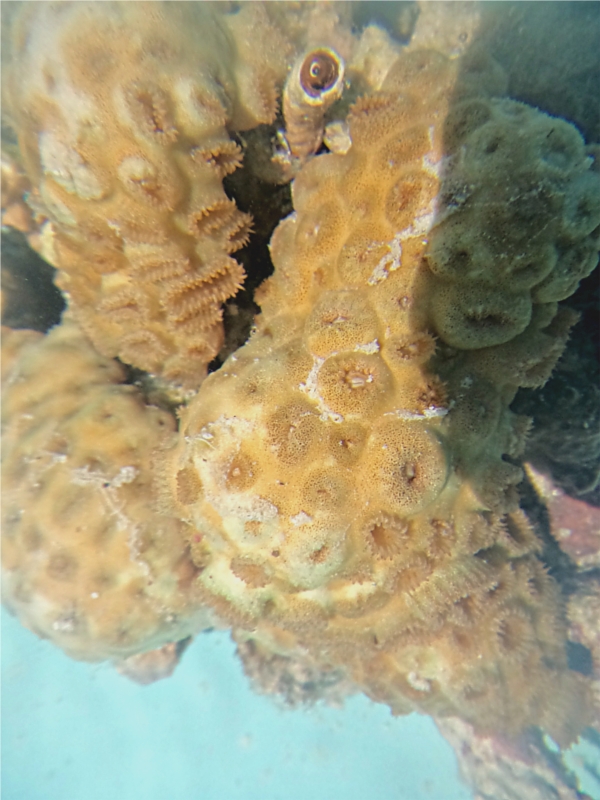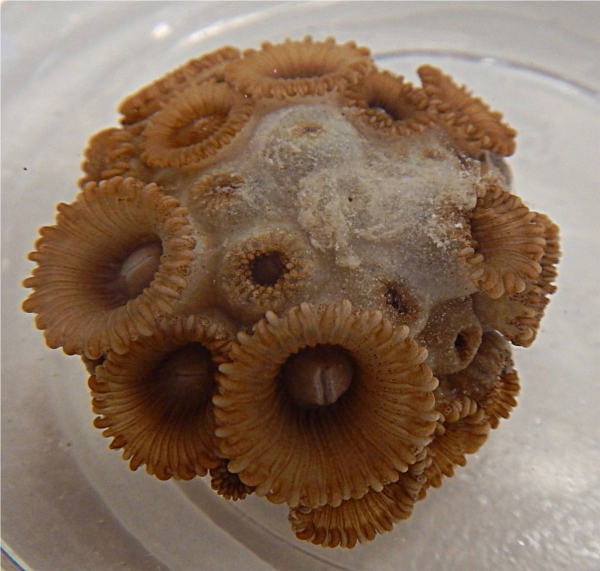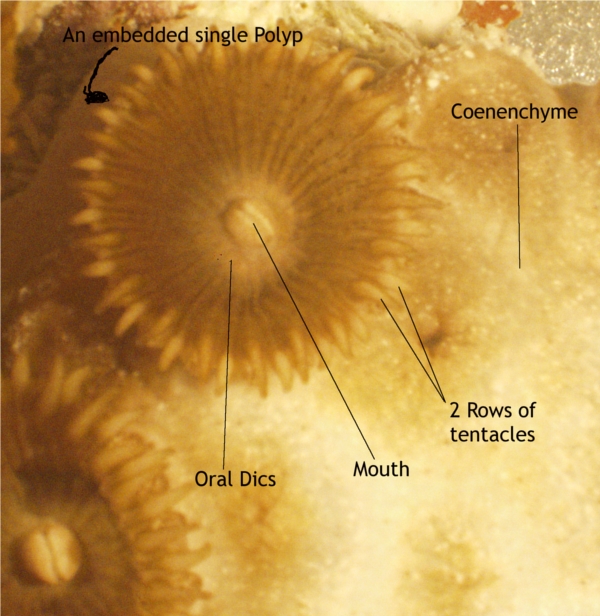 Identification Identification 
Palythoa caesia one of the Pacific species under the genus Palythoa. Palythoa is a very unique genus, their polyps can be fully retract into it their embedded mat. P.caesia is a very common species of colonial anemones that often cover a large area of reef up to more than 2m².
 

 They are usually little, soft-bodied, non-calcify organism that generally group with coral. They encrust hard surface and look like a large coral colonies (Burnett et.al., 1994). They also form masses of zoanthids. P.caesia lack of pedal disc and the polyps usually deeply embedded in well-developed coenenchyme (=immersae) that blend with debris and small reef materials that can make up 65% of their total body weight (Hibino et.al., 2013). The colonies often grow in convex or half-circle shapes and usually less than 30cm across (Borneman, 2004). The polyps and oral discs are broad, flattened and smooth, with no tentacles on the disc surface but tentacles are arranged in two rows around the edge of the oral discs. The polyps of this mat anemone are usually in cream, brown, yellow,and other similar colour, the coenenchyme colour is similar to the embedded polyps. The oral disc may be a bit different, generally darker than the coenenchyme, and sometimes with a greenish brown colour (Borneman, 2004). They are usually little, soft-bodied, non-calcify organism that generally group with coral. They encrust hard surface and look like a large coral colonies (Burnett et.al., 1994). They also form masses of zoanthids. P.caesia lack of pedal disc and the polyps usually deeply embedded in well-developed coenenchyme (=immersae) that blend with debris and small reef materials that can make up 65% of their total body weight (Hibino et.al., 2013). The colonies often grow in convex or half-circle shapes and usually less than 30cm across (Borneman, 2004). The polyps and oral discs are broad, flattened and smooth, with no tentacles on the disc surface but tentacles are arranged in two rows around the edge of the oral discs. The polyps of this mat anemone are usually in cream, brown, yellow,and other similar colour, the coenenchyme colour is similar to the embedded polyps. The oral disc may be a bit different, generally darker than the coenenchyme, and sometimes with a greenish brown colour (Borneman, 2004).

|